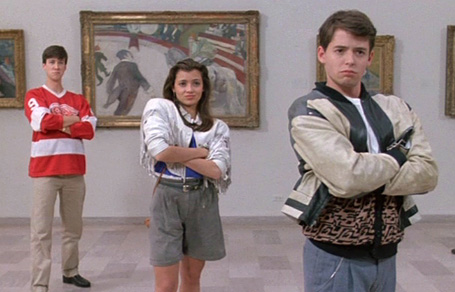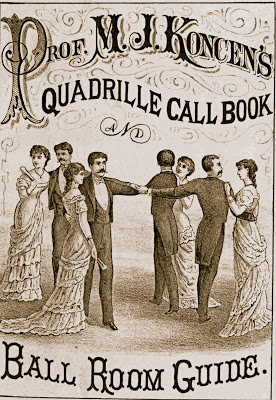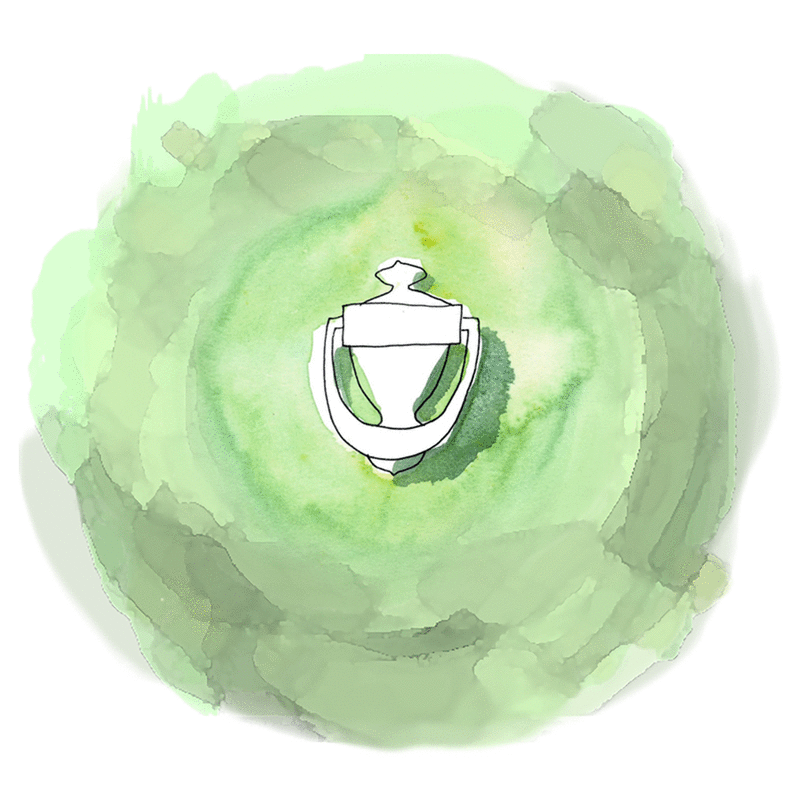
I was really struck by Nina Simon’s post on “Magic Vests” and then Jay Cousin’s post on “Tag Cloud Hats”– all about getting strangers to interact with each other in a positive way. Nina talked about how as a gallery guide at a science museum, she would wear her magic docent vest and people would chat with her. Jay talked about how he made people wear silly hats at a conference and it made it easier for them to chat with one-another. I think one thing that’s interesting about these two examples is the concept of permission to interact. Permission to play. Which is essentially what games are: permission to play.
We have this romantic movie idea that play just magically happens- like we live in an 80’s movie and food fights erupt or people giggle and dance on the street or join 1st grader tour groups in museums. In real life usually play only happens in highly structured environments. Where do you play? Playgrounds (notice we need a specific, fenced-in ground to play), clubs, games, sports, events, fairs, playdates, concerts, laser tag. Even kids don’t have much unstructured play right now. Play is actually something that need lots of rules and lots of permission to happen. Boundaries, tickets, age limits, liability waivers, Is this ideal? No way. I would love a world where people trusted each other enough that play spontaneously erupted everywhere. But since that’s not going to happen, if we want more play we have to acknowledge people’s nervousness and safely guide them to the positive interactions that we’d like them to have.
I’ll get a little more philosophical about it. I suspect the reason that people are so very socially anxious in our day and age is that there are no rules to fall back upon. Anything goes- and that’s really stressful. Once upon a time, social interaction was highly structured. There were calling cards, cotillions, dance cards, sirs, ma’ams and misses, neighborhoods, churches, hat tips, curtseys, ladies’ circles, gentlemen’s clubs (a la 80 days around the world, not a la strip clubs). Even imagine this- when you danced, there were steps. Signals were clear. We know what those clear social signals caused for years and years: racism, classism, repression of some groups, lack of opportunity for others, lots of bad things happened from those strong social structures. We’d like to say we’re past that and that’s a good thing… but it’s stressful thing because now that signals aren’t always so clear, I don’t always know if I can say hello to you.

This is where magic vests, cloud hats and games come in. As game builders we need to understand two things:
#1: People need permission to play. We want play to be something that’s easy, fun and sanctioned, not weird and uncomfortable or makes people feel like they’re “acting up” and drawing attention. That happens with adding more rules, not less. Set the fence, the rules, the expectations.
#2: Establish a framework for how they can begin to interact, don’t expect them to figure it out on their own. You’re not letting them be free and creative, usually you’re stressing them out. The truly creative souls will find out how to break the rules anyways- and let them. But you don’t want the bulk of your audience’s energy to go into trying to figure out how to appropriately deal with this social situation. You want their full attention on learning and sharing.
Please understand, I don’t think people are all walking stress balls thinking “can I talk to you? can I talk to him?” Mostly stranger danger is just part of our normal lives: I don’t bother you, you don’t bother me. But then there are those moments at conferences or cocktail parties or on the train or at the library where you’d love to have someone to chat with but you think “it’d be weird.” Would that be weird? Would I be creepy? We want to use play to remove that question from people’s minds. Remove that stress- that barrier to entry. “weird?!” Nope, not weird. This is part of the game. Talk to that stranger. Share your stories, learn some stuff. It’s a safe place.
The magic vest did just this. Nina was in a museum, she could approach people while wearing the vest and it was okay- they had permission to speak with her and a framework to do it in: things to talk about, an environment where people felt safe talking, a person that they could clearly talk to. She mentioned that later at a zoo, she saw a lost child and attempted to help but she was vestless- just a creepy stranger. Jay’s project did something that I think is always fascinating: silly hats. The rules of civility have already been broken: you’re wearing a silly hat. We might as well talk. I like to set up these same parameters when I teach dance classes. The first thing I always do in a dance class is a ridiculous group warm-up. Bunny hops. Chicken pecking. shake your butt. We’re all in this together and we’re not here to look sexy. Permission to play, here are the steps, now let’s dance.
So the moral of the story is that if you want people to have fun, relax, share with strangers and create community, you need more rules, not less. Give them permission, rules and frameworks for meaningful interactions to happen. Having a party with alcohol and social media and lots of screens around your art collection is sort of cheating. Dulling people’s senses through loud music, dark rooms and alcohol will also make them into interact but for very different reasons- it’s sort of like blue comedy where people laugh because they’re uncomfortable but they still laughed so we think we got it. You don’t want people just to party in a cultural space, you want them to have meaningful interactions.

This is no cotillion. You’re going to set people up to be a little uncomfortable and you may not have a ton of takers at first but as the person building the game or running the class, you have the authority to set up a play space and see what works. Give them permission, set up the frameworks, break the barriers by getting a little silly and then… let’s dance.


Leave a Reply